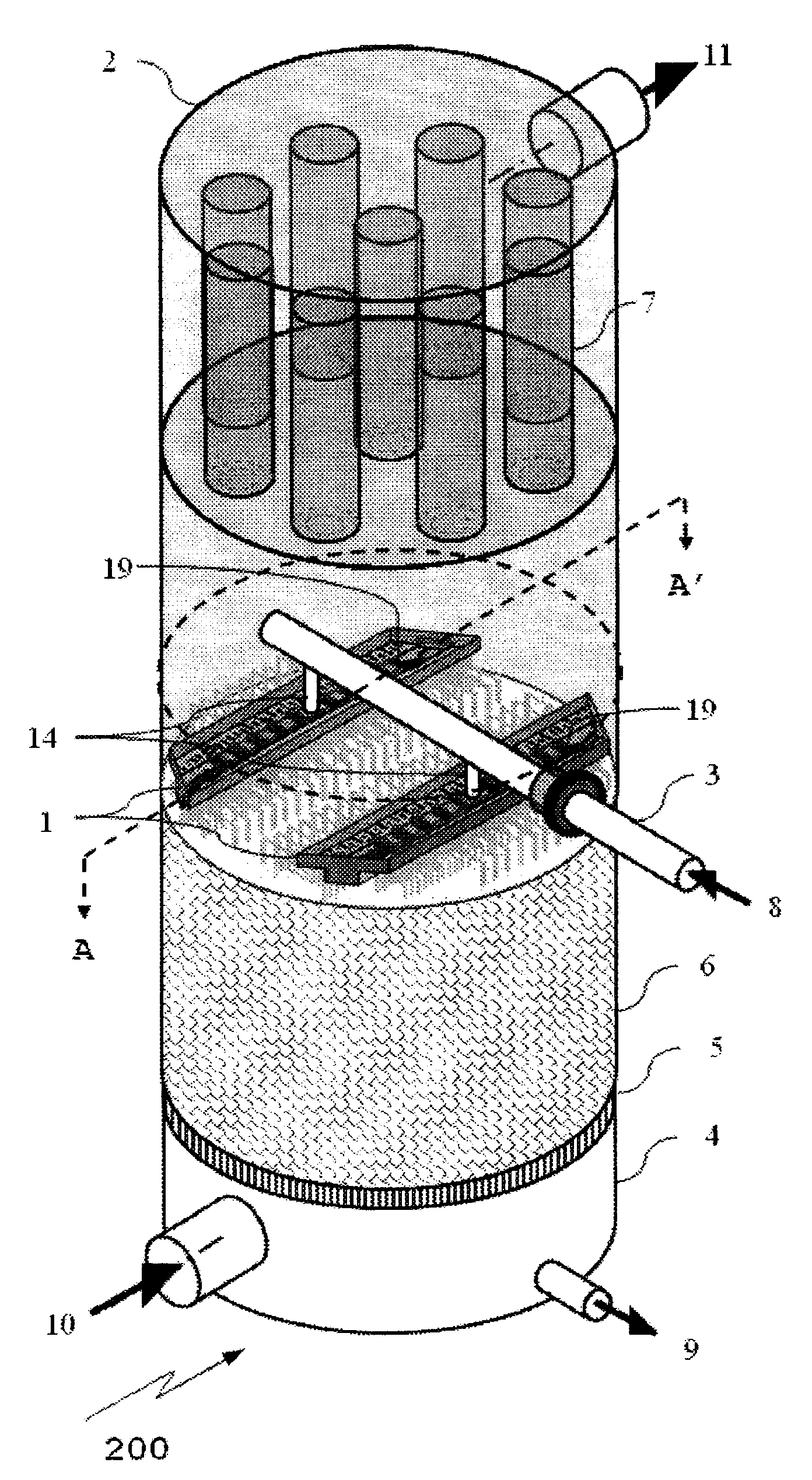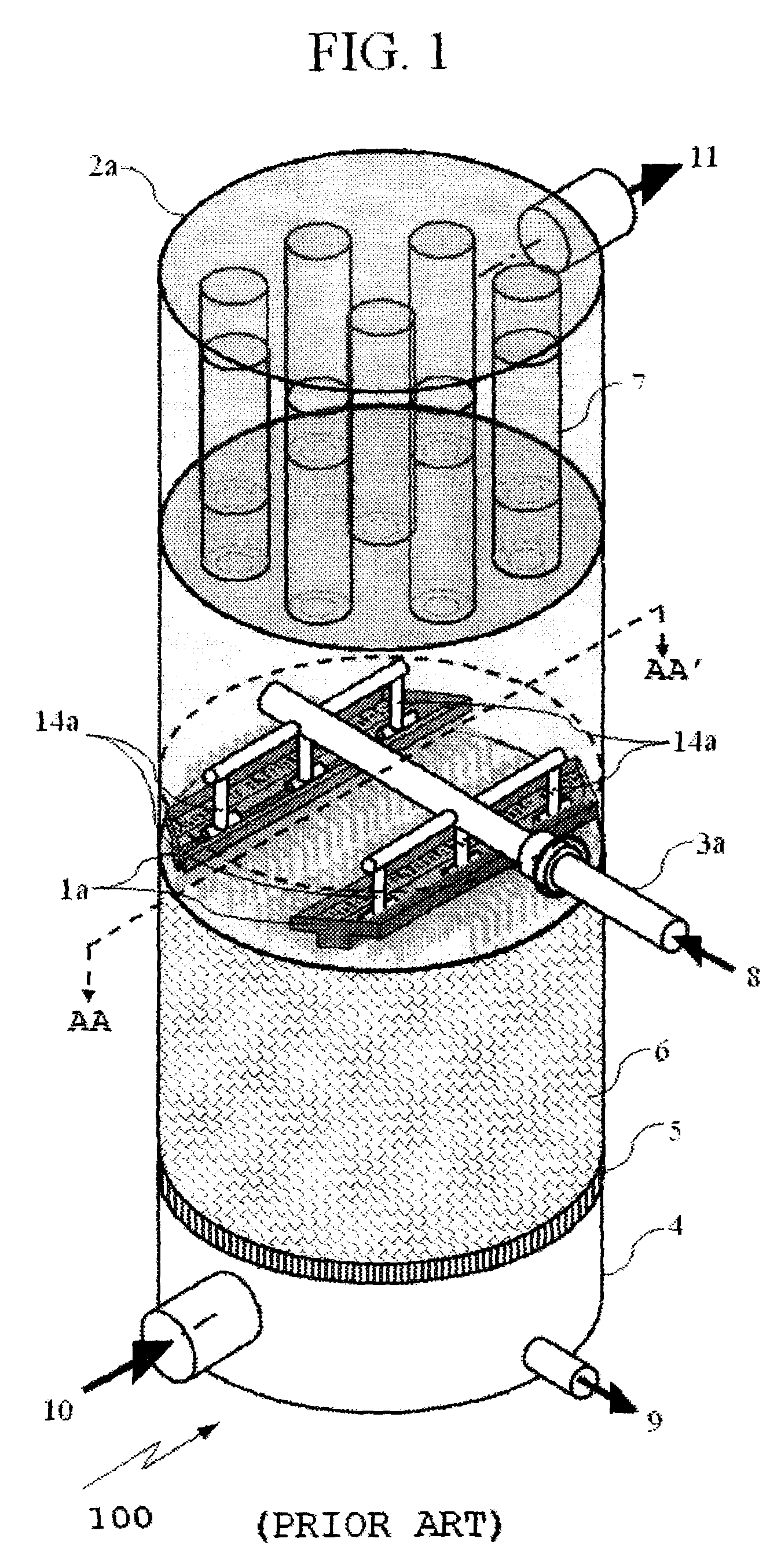Liquid distribution trough for use in towers in sulphuric acid and carbon capture plants
a technology of liquid distribution troughs and carbon capture plants, which is applied in the direction of dispersed particle separation, separation processes, chemistry apparatuses and processes, etc., can solve the problems of difficult to obtain even liquid distribution, relatively expensive, and seldom used pan types, and achieves simple and convenient feed conduits
- Summary
- Abstract
- Description
- Claims
- Application Information
AI Technical Summary
Benefits of technology
Problems solved by technology
Method used
Image
Examples
example
[0104]The successful functioning of the present invention was discovered from experimental testing conducted using a small scale distributor trough. The small scale model was made of clear material to allow observation of liquid flow within trough 1 and to determine the overall performance of the distributor improvements compared to an equivalently sized model according to the prior art. The effects of individual features used in improved distributor 1 were also observed by inserting and removing various components. Test work was used to adjust computer simulation models for accurate reproduction and computer simulation gave further insight into the flow patterns and effects of experimentally added features.
[0105]Each added feature used in the improved distributor 2 was insufficient on its own per se to improve the overall performance of distributor 1. Thus, starting from an empty trough shell, each feature addressed a performance difficulty but often created a new one. The complete...
PUM
 Login to View More
Login to View More Abstract
Description
Claims
Application Information
 Login to View More
Login to View More - R&D
- Intellectual Property
- Life Sciences
- Materials
- Tech Scout
- Unparalleled Data Quality
- Higher Quality Content
- 60% Fewer Hallucinations
Browse by: Latest US Patents, China's latest patents, Technical Efficacy Thesaurus, Application Domain, Technology Topic, Popular Technical Reports.
© 2025 PatSnap. All rights reserved.Legal|Privacy policy|Modern Slavery Act Transparency Statement|Sitemap|About US| Contact US: help@patsnap.com



